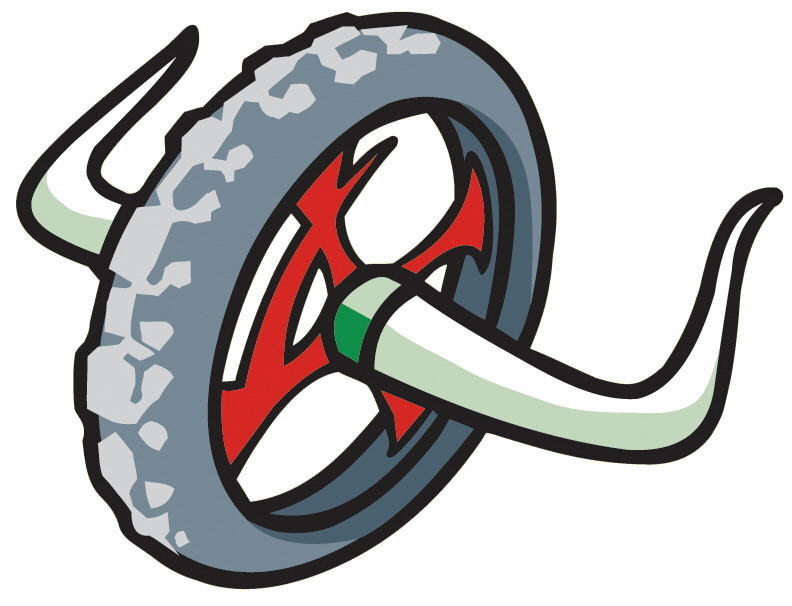subprime 모기지에 의한 미국의 경제위기가 생각보다 심각하게 전개 될 조짐이 보이고 있습니다. 재할인율가지고 모자라 금리인하를 하더라도 임시처방일 뿐이라는 전문가들의 조언이 속속 나오고 있습니다. 우리 개미들도 또 한번 당하지 말고 대비하여야 합니다.
New York - Millions of homeowners around the nation are now getting the news in the mail: The interest rate on their home loans is going up, possibly to double-digit levels.
The hardest hit are expected to be people who have less-than-stellar credit and cannot afford to make the new payments. An increase of several hundred dollars a month will force them either to get relief or to default. The prospect of significant and growing losses has already rocked Wall Street and shaken up the broader mortgage markets. And, concerned about the human suffering, policymakers are already searching for ways to help people out.
"The meltdown in the subprime market is the biggest threat to the housing market and the broader economy," says Mark Zandi, chief economist at Moody's Economy. com. "It is at the vortex of the problem."
Over the next several months, banks will be changing the "teaser rates" that homeowners received two years ago.
The peak for resetting loans will be in October, when the rates on some $50 billion worth of mortgages are likely to rise by 2 percentage points or more. This could mean a rise of several hundred dollars a month for many borrowers.
For example, on a $210,000 loan balance (the average subprime amount in 2006), the additional 2.5 percentage point increase on the interest rate adds about $4,560 a year, or about $380 a month, estimates James Kragenbring, senior investment officer at Advantus Capital Management in St. Paul, Minn.
That means the median household would have to devote an extra 9.5 percent of income just to pay the extra interest.
"Given the debt-to-income ratio of the typical subprime borrower at the time they received their loan, it is unclear where the extra cash flow will come from," says Mr. Kragenbring.
Interest costs rise faster than pay
It probably won't come from a pay raise, if recent trends continue. Last year, median household income rose 0.7 percent to $48,201, the US Census Bureau reported Tuesday.
"If mortgage payments are rising faster than the 0.7 percent average growth rate, then they are rising faster than incomes and that could create problems," says Chuck Nelson, of the Census Bureau.
It's already creating problems in Buffalo, N.Y.
"If the borrower is on Social Security, the most their income is rising is 3 percent a year and the mortgage payments are rising much faster than that," says Carol Brent, staff attorney of Legal Services for the Elderly.
She says she has clients whose monthly income is $800 a month but whose mortgage payments have now mushroomed to $500 a month. "No one looked at the affordability factor."
As the interest rates have climbed, the percentage of delinquencies is on the rise. Of the loans made in 2001, nearly 30 percent are now at least 60 days past due. Loans made last year now have nearly a 15 percent delinquency rate, a faster growth rate than any other year (see chart at left). Mr. Kragenbring says the most recent loans in 2007 are not performing much better.
Community groups report that lenders are still making loan offers with unrealistic rates. One group in New York City says it has seen postcards advertising a teaser rate of 1.5 percent. But under that scenario, the borrower is paying less than the full amount of interest owed, which increases his debt. "What they don't tell you is [that] these very low monthly payments ... are rapidly building up debt and then they reset at an unaffordable level," says Oda Friedheim of the Legal Aid Society in Queens.
After foreclosures, vacant homes
The rising level of delinquencies is leading to a sharp rise in foreclosures. In Buffalo, Ms. Brent says there are now 23,000 vacant homes, many of them emptied by foreclosure procedures. "We are trying to work with the attorneys who are seeing the light because of the number of foreclosures," says Ms. Brent. "We are working on ways to structure repayment plans so the borrowers are not back in foreclosure in two years."
The defaults are now taking place much faster than a few years ago, says Sarah Ludwig, executive director of the Neighborhood Economic Development Advocacy Project, which works with community groups in New York City.
"In Queens, the time frame in which people are defaulting has gone from four years to two years," says Ms. Ludwig. "That means some defaults are taking place right away."
Refinancing is not a significant option for many borrowers. "What I hear is that there is very little activity in the subprime market, especially where questions of credit quality have grown in rapid proportions," said David Seiders, chief economist for the National Association of Home Builders, in a press conference on Tuesday.
Kragenbring says the volume of subprime loans now being made is tiny compared with last year. And lenders are finding it tough to find buyers for the new loans in the secondary market. "To me, that makes the subprime market virtually nonexistent," he says.
Subprime lenders First Franklin, owned by Merrill Lynch, and EquiFirst, owned by Barclays, maintain they are still making loans. However, they refused to comment about where they were receiving funding for the loans. On Tuesday, EquiFirst announced an unspecified number of job cuts.
If the market for subprime debt returns, Kragenbring expects three major changes. First, loans will be for a fixed interest rate, not the adjustable version. "It will help match the time people live in the house and the borrowers will pay less fees," he says. Second, lenders will require much better documentation of income. Third, borrowers will be borrowing a smaller percentage of the value of their homes.
"It's clear to me that in the future there will be different loan products and less leverage on the individual property," Kragenbring adds.
New York - Millions of homeowners around the nation are now getting the news in the mail: The interest rate on their home loans is going up, possibly to double-digit levels.
The hardest hit are expected to be people who have less-than-stellar credit and cannot afford to make the new payments. An increase of several hundred dollars a month will force them either to get relief or to default. The prospect of significant and growing losses has already rocked Wall Street and shaken up the broader mortgage markets. And, concerned about the human suffering, policymakers are already searching for ways to help people out.
"The meltdown in the subprime market is the biggest threat to the housing market and the broader economy," says Mark Zandi, chief economist at Moody's Economy. com. "It is at the vortex of the problem."
Over the next several months, banks will be changing the "teaser rates" that homeowners received two years ago.
The peak for resetting loans will be in October, when the rates on some $50 billion worth of mortgages are likely to rise by 2 percentage points or more. This could mean a rise of several hundred dollars a month for many borrowers.
For example, on a $210,000 loan balance (the average subprime amount in 2006), the additional 2.5 percentage point increase on the interest rate adds about $4,560 a year, or about $380 a month, estimates James Kragenbring, senior investment officer at Advantus Capital Management in St. Paul, Minn.
That means the median household would have to devote an extra 9.5 percent of income just to pay the extra interest.
"Given the debt-to-income ratio of the typical subprime borrower at the time they received their loan, it is unclear where the extra cash flow will come from," says Mr. Kragenbring.
Interest costs rise faster than pay
It probably won't come from a pay raise, if recent trends continue. Last year, median household income rose 0.7 percent to $48,201, the US Census Bureau reported Tuesday.
"If mortgage payments are rising faster than the 0.7 percent average growth rate, then they are rising faster than incomes and that could create problems," says Chuck Nelson, of the Census Bureau.
It's already creating problems in Buffalo, N.Y.
"If the borrower is on Social Security, the most their income is rising is 3 percent a year and the mortgage payments are rising much faster than that," says Carol Brent, staff attorney of Legal Services for the Elderly.
She says she has clients whose monthly income is $800 a month but whose mortgage payments have now mushroomed to $500 a month. "No one looked at the affordability factor."
As the interest rates have climbed, the percentage of delinquencies is on the rise. Of the loans made in 2001, nearly 30 percent are now at least 60 days past due. Loans made last year now have nearly a 15 percent delinquency rate, a faster growth rate than any other year (see chart at left). Mr. Kragenbring says the most recent loans in 2007 are not performing much better.
Community groups report that lenders are still making loan offers with unrealistic rates. One group in New York City says it has seen postcards advertising a teaser rate of 1.5 percent. But under that scenario, the borrower is paying less than the full amount of interest owed, which increases his debt. "What they don't tell you is [that] these very low monthly payments ... are rapidly building up debt and then they reset at an unaffordable level," says Oda Friedheim of the Legal Aid Society in Queens.
After foreclosures, vacant homes
The rising level of delinquencies is leading to a sharp rise in foreclosures. In Buffalo, Ms. Brent says there are now 23,000 vacant homes, many of them emptied by foreclosure procedures. "We are trying to work with the attorneys who are seeing the light because of the number of foreclosures," says Ms. Brent. "We are working on ways to structure repayment plans so the borrowers are not back in foreclosure in two years."
The defaults are now taking place much faster than a few years ago, says Sarah Ludwig, executive director of the Neighborhood Economic Development Advocacy Project, which works with community groups in New York City.
"In Queens, the time frame in which people are defaulting has gone from four years to two years," says Ms. Ludwig. "That means some defaults are taking place right away."
Refinancing is not a significant option for many borrowers. "What I hear is that there is very little activity in the subprime market, especially where questions of credit quality have grown in rapid proportions," said David Seiders, chief economist for the National Association of Home Builders, in a press conference on Tuesday.
Kragenbring says the volume of subprime loans now being made is tiny compared with last year. And lenders are finding it tough to find buyers for the new loans in the secondary market. "To me, that makes the subprime market virtually nonexistent," he says.
Subprime lenders First Franklin, owned by Merrill Lynch, and EquiFirst, owned by Barclays, maintain they are still making loans. However, they refused to comment about where they were receiving funding for the loans. On Tuesday, EquiFirst announced an unspecified number of job cuts.
If the market for subprime debt returns, Kragenbring expects three major changes. First, loans will be for a fixed interest rate, not the adjustable version. "It will help match the time people live in the house and the borrowers will pay less fees," he says. Second, lenders will require much better documentation of income. Third, borrowers will be borrowing a smaller percentage of the value of their homes.
"It's clear to me that in the future there will be different loan products and less leverage on the individual property," Kragenbring adds.






 손님
손님
댓글 달기